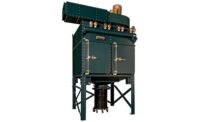Critical issues
For most ISHN readers, beryllium exposures pose no direct health threat. In a workforce that now totals 142.4 million people, perhaps 21,000 are exposed to beryllium, an extremely toxic metal, estimated the Agency for Toxic Substances and Disease Registry (ATSDR) in 2002.But don’t stop reading here. Important safety and health issues surround beryllium exposures that can affect millions more workers, including perhaps those in your workplace. Remember, OSHA estimates more than 30 million workers are exposed to hazardous chemicals. Its hazard communication standard covers some 650,000 hazardous chemical products found in more than three million establishments.
Here are some issues with beryllium risks with wider implications:
- Neglecting housekeeping as an important tool to control toxic exposures;
- Lack of awareness about possible risks of dermal exposures;
- Overlooking the threat of “take-home†contamination; and,
- Use of outdated exposure standards.
Beryllium exposed
First, let’s take a look at what beryllium is, and its health risks. Beryllium is the lightest metal, making it attractive for many manufacturing applications. Most beryllium ore that is mined is converted into alloys (mixtures of metals) used to make electrical and electronic parts, or as construction materials for machinery and molds for plastics. Beryllium alloys are also used in automobiles, computers, sports equipment (such as golf clubs and bicycle frames) and dental bridges. Pure beryllium metal is used in nuclear weapons and reactors, aircraft and space vehicle structures, instruments, x-ray machines and mirrors.In air, beryllium compounds are present mostly as fine dust particles. The dust eventually settles. Extremely small beryllium particles may remain in the air for about ten days, according to the ATSDR.
Exposure to high levels of beryllium metal, oxide, and alloy forms through inhalation or dermal exposure can lead to sensitization and, in a small percentage of those sensitized, to chronic beryllium disease, says ATSDR.
Government actions
OSHA’s current standard sets the permissible exposure level for beryllium at two micrograms per cubic meter of air — based on industrial hygiene measures first implemented in 1949. OSHA’s PEL is akin to putting a marble-sized piece of beryllium in a box six feet high and a mile long and a mile wide, as described in the Chicago Tribune report.
Since 2000, all DOE sites with potential beryllium exposures to workers have been required to implement stricter controls. DOE’s rule sets out an “action level†that triggers mandatory worker protection measures at 0.2 micrograms of beryllium per cubic meter of air. Like most toxic health risks in the workplace, attention to beryllium focuses on inhalation exposures. (It should be noted DOE sites are required to measure beryllium in air filter and surface wipe samples to guard against release of materials from beryllium-controlled areas.)
Dermal risks not assessed
“(Beryllium) is one example of many where dermal exposure risk assessment is not common,†says Dr. Jeffrey S. Duffy, CIH, industrial hygiene manager for Nextteq, LLC, which manufactures the only colorimetric spot-check swipe for beryllium now on the market. The question of how much skin contact with beryllium dust particles creates a risk has not been well studied, says Dr. Duffy.More broadly, not a lot is known about surface contamination risks of many toxic substances because ingestion and inhalation have been considered more significant pathways of exposure in general industrial hygiene and toxicology practice, he explains.
But monitoring and controlling surface contamination is important — not just for beryllium, but for many toxic substances that take the form of dust particles — due to the risk of particles becoming airborne and being inhaled.
(According to ATSDR, beryllium will not enter your body from skin contact with the metal unless the skin is scraped or cut and beryllium particles become imbedded in the wound.)
Take-home risks
Another risk is airborne particles clinging to work clothes and being carried home. In 1999, NIOSH found beryllium contamination in the personal vehicles of beryllium machine shop workers in Alabama. Workers at this facility were allowed to wear their work shoes outside of the machine shop.In 1999, OSHA issued a hazard information bulletin on beryllium that encouraged hygiene controls, including showers and separate work clothes. But OSHA doesn’t require companies to have beryllium-exposed workers shower or change clothes.
Several studies have documented cases of chronic beryllium disease occurring in the spouses of beryllium workers, according to ATSDR. Shaking beryllium–contaminated work clothes can produce 0.3 µg/m3 of beryllium, according to one report. In 1980, a spouse of a beryllium plant worker was diagnosed with chronic beryllium disease. She laundered contaminated clothing at home after her husband was injured at the plant and she toured the plant, according to ATSDR.
Due to the unknowns associated with assessing the risk of beryllium surface contamination and the reports of chronic beryllium disease among family contacts, prudent public health practice calls for preventing the spread of beryllium dust through the use of hygiene, housekeeping, work practice and engineering controls, states ATSDR.



